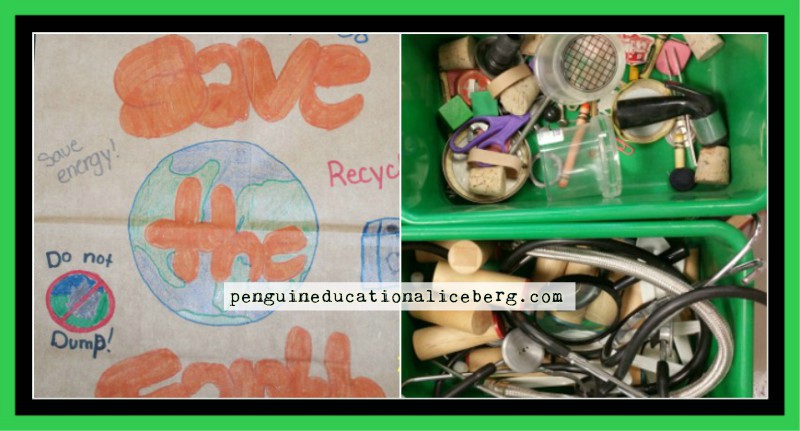Together? Separately? Integrated?
How do you design your Science and Social Studies instruction? How does that design influence your set up? What are your Science and Social Studies areas in your classroom like? Yes, I know this is the age of integrating subject areas, excuse me, teaching “ interdisciplinary concepts”. Yes, seeing the big picture is valid, I understand the logic, but I think 4-7 year old kiddos still need each “brick” to build the foundation. Wait, that’s another post about my instructional views. This is about my set up. 😉 I like to set up two separate areas for Science and Social Studies related items.
interdisciplinary concepts”. Yes, seeing the big picture is valid, I understand the logic, but I think 4-7 year old kiddos still need each “brick” to build the foundation. Wait, that’s another post about my instructional views. This is about my set up. 😉 I like to set up two separate areas for Science and Social Studies related items.
Setting up Science in my primary classroom has always seemed pretty simple to me. Some magnets, stethoscopes, plastic animals and you’re ready to go, right? Over the years, I’ve always been surprised at what will get the kiddos’ attention. One kindergarten group was fascinated with screwdrivers and thoroughly enjoy taking things apart… old CPU’s, toaster oven, clocks. The older the item the better, get those parents who are cleaning out the garage or storage unit and hit the garage sales.
Items in my station, with green tubs, green for Science (Please excuse the simple labels, “cute and catchy” just never happened):
1. Touch: cotton balls, sandpaper, feathers, rocks, sticks, fabric (silk, corduroy, fleece)
2. Shells
3. Microscope:  Geo Safari Talking Microscope
Geo Safari Talking Microscope
4. Movement: balls, blocks to use as ramps, cubes, rollers, pulleys, cords, markers, crayons, pencils, plastic eggs
5. Sight: hand lenses, binoculars, slides, opaque paper, transparencies
6. Animals: plastic animals from various regions
7. Magnets: hand, horseshoe, bars
8. Items to test: various items to explore using a hand lens, magnet, or your senses
9. Sound: stethoscope, canisters with hidden items to shake, bells, sandpaper
10. Storage for Science Notebooks
11. Animal Picture Cards: cards with animal facts (habitat, food, prey, predator)
12. Hand Lenses
13. Pictures of penguins on rings (old calendars, cards)
When I begin to introduce the items, I model for them and role-play with them the incorrect and correct ways to use the items. I usually choose 2 tubs at a time. I spread tub 1 of the items on 3 tables and tub 2 of the items on the other 3 tables. I give about 10 minutes to explore and then switch kiddos. It’s short and sweet, so I’m not crazy. 🙂 We focus on how our senses help us learn something about the tub’s items. I repeat this routine several days (or weeks, depending on the class personality) with the same 2 tubs, before introducing any other tubs. It’s a long time before they get to pick “willy-nilly” from the tubs.
The Social Studies area isn’t as straight forward for me. What about you? It has typically been my globe, some atlases (that I saved from the dumpster years ago, to prove there was information before Google), and mainly books in tubs covering the following topics: Family, Friends, Community, and Government. Within each tub, I strive to provide a local and global perspective of each topic.  We’re an International Baccalaureate Primary Years Programme campus and for a lot of our Kinder/1st Social Studies, we focus on trying to make the Learners’ Profile and Attitudes more accessible to the kiddos; a real world connection. There are loads of book lists to choose from on the web. One at a time, I share the book and we focus on what makes the book a good example of that particular attitude, really focusing on the attitude’s definition. Afterwards, I s
We’re an International Baccalaureate Primary Years Programme campus and for a lot of our Kinder/1st Social Studies, we focus on trying to make the Learners’ Profile and Attitudes more accessible to the kiddos; a real world connection. There are loads of book lists to choose from on the web. One at a time, I share the book and we focus on what makes the book a good example of that particular attitude, really focusing on the attitude’s definition. Afterwards, I s![]() witch out the bottom circle (velcro on a recycled cookbook stand) back to it’s spot on the wall and change out the book. If you’re interested in the cute chalkboard circles, see Ms. Murdoch’s store. This arrangement has made it easier for me to teach the attitudes and not feel like I was just glossing over them.
witch out the bottom circle (velcro on a recycled cookbook stand) back to it’s spot on the wall and change out the book. If you’re interested in the cute chalkboard circles, see Ms. Murdoch’s store. This arrangement has made it easier for me to teach the attitudes and not feel like I was just glossing over them.
Please share your Science and Social Studies areas in your classroom.
Thanks for stopping by,



2 responses to “Setting Up Science and Social Studies in My Primary Classroom”
I love the science center ideas!
I’m going to go through my
garage for old appliances this
weekend!
I’m glad! Let me know what you find!
Thanks Donna, you’re my 1st comment!!!!